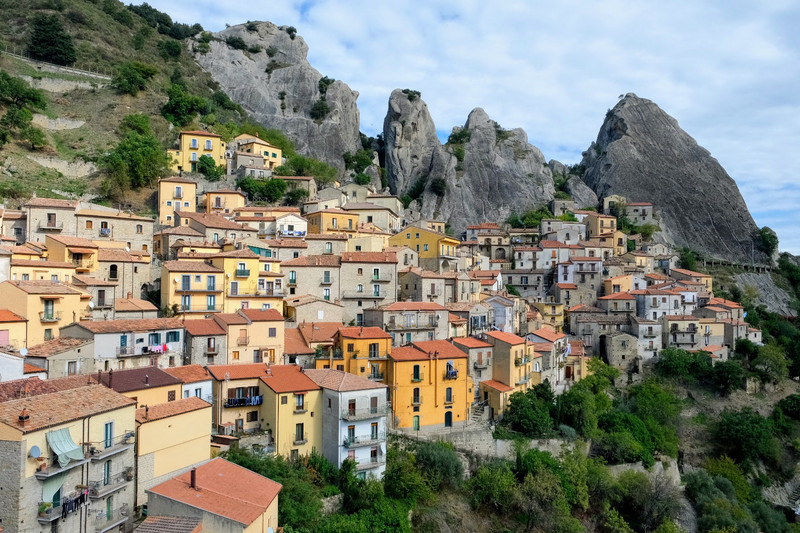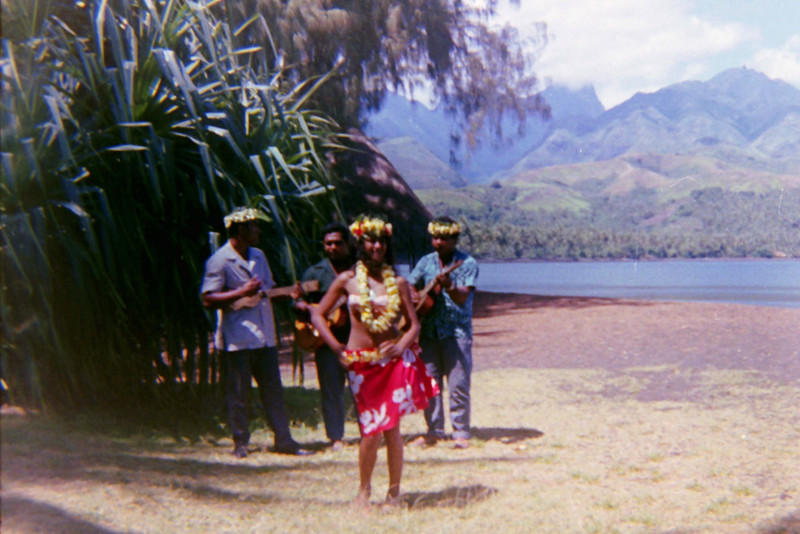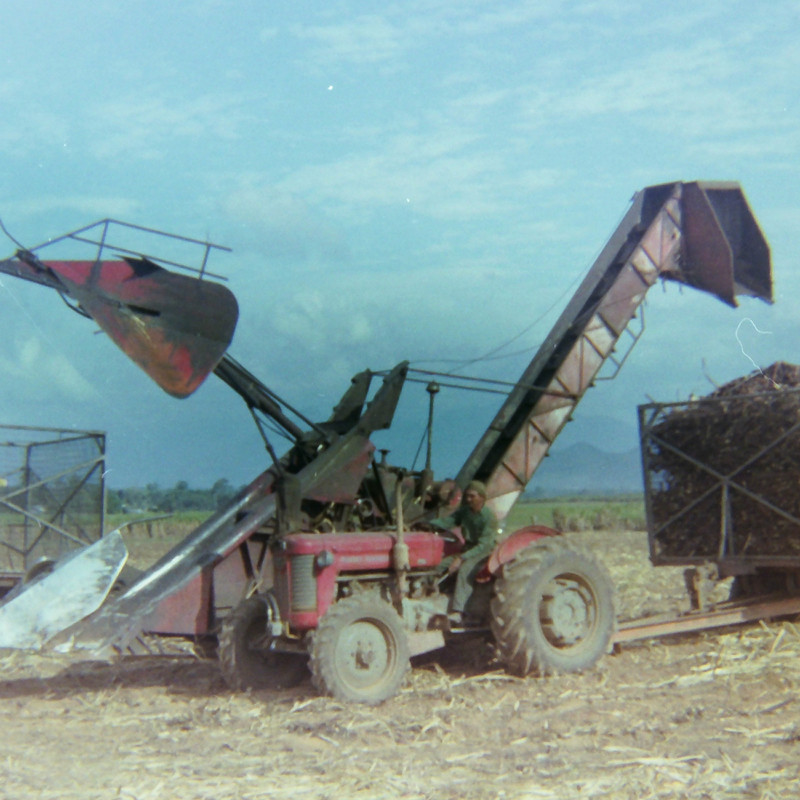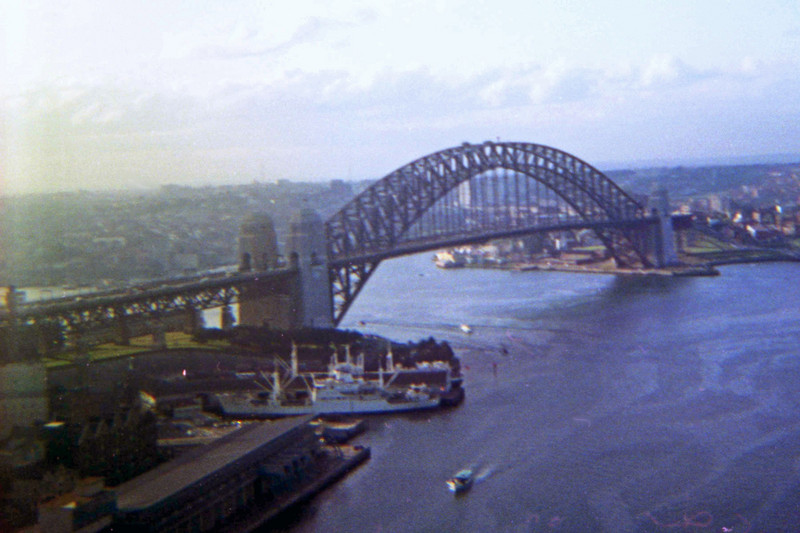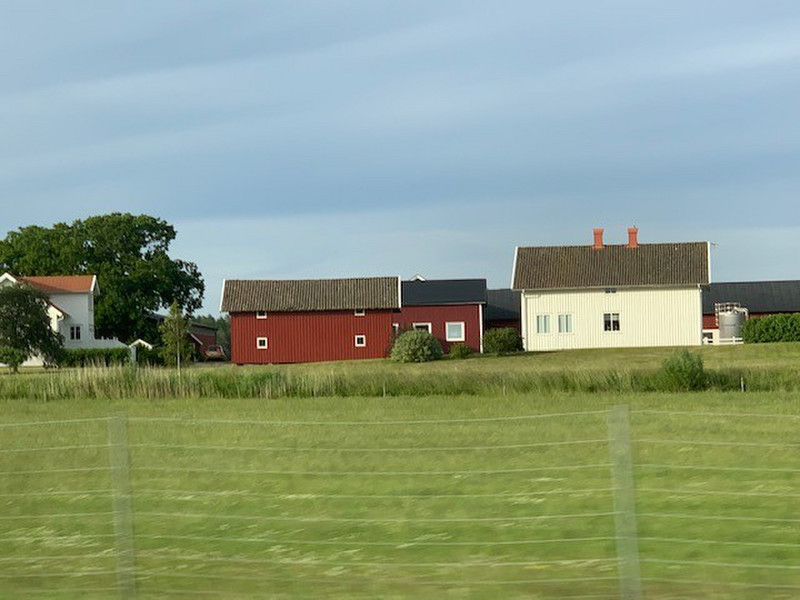After Salerno, we continued on for two nights in Matera. But first we had to make a stop on the way at the amazing medieval village of Castelmezzano in Basilicata. Its about an hour from Matera, the sun came out and the pastel houses against the stark, eroded mountains in the background was an unforgettable sight. In season, there is a zipline called the flight of the angels between this village and the neighboring village of Pietrapertosa.
Any trip to Matera will be a memorable one. Some places in Italy are similar but nothing to it. Matera is believed to be the continually inhabited place in the world after Aleppo and Jericho. Unesco called it the most outstanding, intact example of a troglodyte settlement in the Mediterranean region. It is situated between two canyons carved by the Gravina River. The Sassi di Matera (the Stones of Matera), is of cave dwellings carved into the canyon.
Matera has been occupied by Greeks, Romans, Byzantines, Saracens and Bourbons (among others) but by the late 1800s it had fallen into extreme poverty and neglect.
exiled by Mussolini to Basilicata, and wrote about it in 1945: On the floor dogs, sheeps, pigs, and goats were laying down. Each family has just one of those caves as a home, and they sleep altogether there, men, women, children, animals.
It became known as the shame of Italy. There was no running water, electricity or sanitation, whole families lived with their animals in small cave dwellings and disease, particularly malaria, cholera and typhoid, was rampant.
(Taken from an article in the Guardian) Luigi Plasmati, 89, recollects growing up amid chronic poverty in a crammed cave in Matera. It was brutal, he said. There were families of maybe nine or 10 children, sleeping next to mules and pigs. We were dying of hunger.
In the 1950s the whole population, about 15,000 people, was moved out to new housing nearby. One of the things that I found fascinating but not surprising, was that even though they lived right next to their old houses, they never visited. It abandoned, inhabited only by wolves, until the 1980s, when young people started returning and fixing up houses with government subsidies.
Today it is a tourist favorite with its tunnels and caverns, cave houses and churches. Only 30 percent of Matera is visible, the other 70 percent is hidden. Designated a Unesco Heritage Site in 1993 and a European Culture Capital in 2019, it is also a popular site for movies, often doubling for Jerusalem. The last James Bond movie, No Time to Die, was produced there in 2019. 25 percent of Matera is rented out on Airbnb - more than any other place in Italy. They got 600,000 tourists a year before Covid.
We stayed two nights in a big cave house in the new part of town, about a 10 minute walk into the Sassi. There was street parking and we didnt move the car while we were there. We had a perfect sunny day, without big crowds, and we spent it slowly walking all around the Sassi. Because of the covid situation we didnt go into the churches and old cave houses and museums. Google said we covered 9 kilometers but there was a lot more to see.
had many different sorts of meat to pick out and barbecue. The dining room was just a bare room with some tables and chairs, so didnt expect much, but the food was good. My Matera food highlight was the focaccia I got on the way back from watching the sun rise over the Sassi. No cheese, no tomato, just focaccia, potato and a lot of olive oil. So good, came back the next morning too.
I maybe shouldnt write this. Im not crazy about pizza and pasta. I hope I wont be banned from Italy. Italians are very proud - they are proud of their food and country and culture and history and also their language. So proud that in the south hardly any of them speak English.
So what did I eat? I ate cake, quite a lot of cake, focaccia, and of course, sandwiches and gelato and in Puglia antipasto and also quite a lot of pizza and pasta as well.
